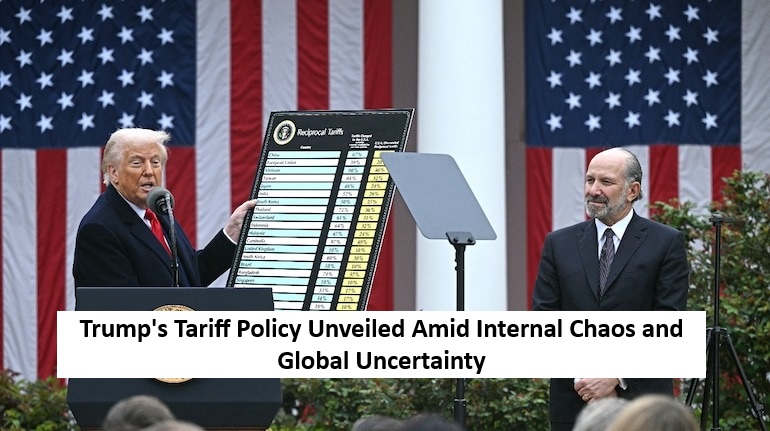
President Donald Trump’s long-anticipated tariff announcement was marked by last-minute changes and confusion within the administration. Hours before the unveiling, key decisions about the size, scope, and public messaging of the duties were still under debate.
Despite touting tariffs as a cornerstone of his economic agenda, Trump’s administration struggled with the rollout. Steel and auto workers were already assembled in the White House Rose Garden while final elements were still being decided. The administration initially shared incorrect tariff rates during the ceremony, only to revise them twice within 24 hours.
Uncertainty Reflects Internal Disarray
The confusion highlighted a lack of coordination, with even senior officials unable to explain omissions in the presented data. Treasury Secretary Scott Bessent responded “I’m not sure” when asked about missing countries like Canada and Mexico.
The policy was heavily influenced by a close circle of loyalists, including Commerce Secretary Howard Lutnick and senior counselor Peter Navarro, rather than seasoned trade experts. As a result, traditional free-trade voices had diminished influence.
Markets React, Allies Alarmed
Following the announcement, global markets plummeted. The S&P 500 Index experienced its worst day since 2020, losing around $2.5 trillion in value. European leaders hinted at retaliation, while Asian governments waited to see how the US would proceed.
Despite market volatility, Trump remained unfazed. Speaking aboard Air Force One, he stated he was open to reducing tariffs if other countries offered significant concessions. This contrasted with earlier statements from his team, which ruled out negotiations entirely.
Controversial Policy Structure and Execution
The administration adopted a reciprocal tariff strategy based on trade surpluses rather than traditional tariff metrics. Critics noted the inconsistency in approach, particularly with auto tariffs that contradicted the stated fairness principle.
The rushed nature of the rollout limited engagement with lawmakers and allies. Senator Jerry Moran expressed concern over the lack of focus and communication. Meanwhile, bipartisan legislative efforts emerged to limit the president’s authority on imposing new tariffs.
Mixed Industry Reactions and Long-Term Implications
While some industries welcomed exemptions, others expressed concern about the broader implications. An internal memo titled “Support Grows for President Trump’s America First Reciprocal Trade Plan” included praise from sectors spared by the tariffs.
Trump’s long-term goals—such as increasing tariff revenue and reshoring manufacturing—may conflict. As production returns to the US, reliance on imports and associated tariff revenues could decline. Meanwhile, questions remain about competitiveness in a high-wage environment, with officials suggesting automation over human labor for future production.
Read More: Bangladesh Unrest Intensifies as Angry Mobs Target Media Offices Following Death of Student Leader

 Share
Share



